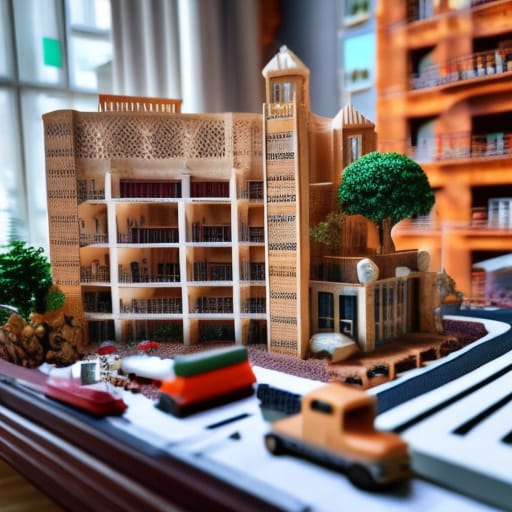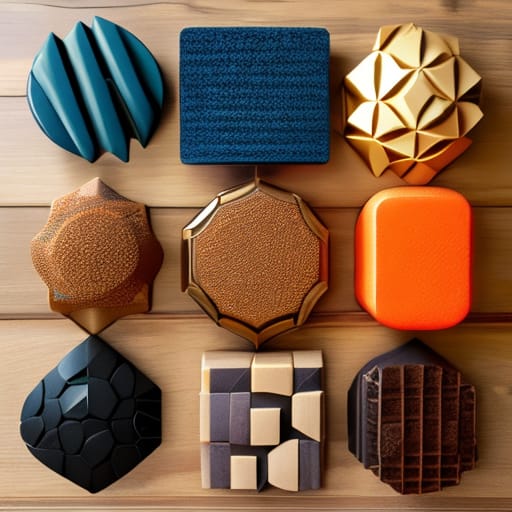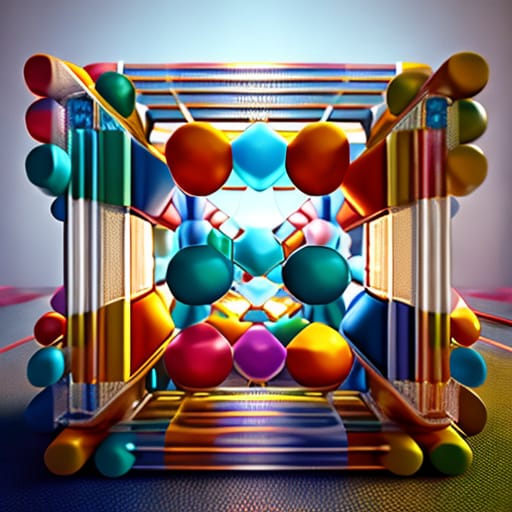Interlocking toy blocks have been a classic toy for generations. These simple colored blocks that fit perfectly together have educational benefits that stimulate young minds. This guide will explore the world of interlocking blocks – from their use in early education to more complex architectural creations.
What Are Interlocking Toy Blocks?
Interlocking toy blocks are construction toys made up of colorful plastic or wooden blocks that have projections and indentations that allow them to fit together and attach securely. Some of the most popular brands include:
- LEGO – The iconic interlocking plastic blocks that can snap together to build almost anything. LEGO blocks have “studs” that stick up and tubes underneath that fit over the studs.
- Lincoln Logs – Notched miniature wooden logs that interlock to build cabins and structures.
- BRIO – Wooden toy trains, tracks, and building blocks that connect together.
- Mega Bloks – A LEGO compatible toy system made up of plastic interlocking blocks.
Key features of interlocking blocks:
- Made of plastic, wood, or other materials
- Have projections and indentations
- Friction and shape hold pieces together
- Reusable – structures can be disassembled and rebuilt
- Encourage creativity and open-ended play
The Importance of Interlocking Blocks in Learning
Interlocking blocks have been a staple toy for preschools worldwide for good reason – they provide almost endless play possibilities that nurture young minds.
Specific educational and developmental benefits include:
- Teach STEM concepts – As children play with interlocking blocks, they utilize engineering, science, technology, and math skills. Figuring out how structures fit together utilizes spatial reasoning, shape recognition, and physics concepts.
- Develop fine motor skills – Grasping, manipulating, and connecting small blocks together builds fine motor control and dexterity.
- Enhance creativity – With no specific direction, interlocking blocks let kids construct anything they can imagine. This open-ended play boosts creativity, problem solving, and cognitive flexibility.
- Grow reasoning and planning – Children naturally plan what to build next, how pieces fit together, and modify structures along the way in response to issues, cultivating critical thinking abilities.
- Promote independent play – Playing alone with interlocking blocks allows children to outfit their own ideas and experience the empowerment of creating something all by themselves.
- Introduce early architecture concepts – Building structures introduces core architecture principles like balance, tension, compression, etc. in a simple, hands-on way.
Multiple studies correlate playing with interlocking blocks with improved spatial intelligence, math skills, and overall academic performance. Their versatility as a teaching aid continues even into higher grades and college for certain subjects.
Using Interlocking Blocks to Teach Chemistry
Interlocking blocks have proven to be an incredibly flexible educational tool. Educators have devised clever ways to integrate them into teaching chemistry concepts:
Chemistry Education Modules
- University researchers have developed [hands-on learning modules] utilizing interlocking blocks to teach chemistry principles:
- Atomic Structure Module – Models atoms, ions, isotopes using different colors and shapes of blocks
- Molecular Structure Module – Uses blocks to construct common molecules, illustrate bonding
- Thermodynamics Module – Builds diagrams of endothermic/exothermic reactions
- States of Matter Module – Creates solid, liquid, gas phase representations
- Overall, using interlocking blocks leads to deeper engagement and conceptual understanding.
Drawing Molecular Representations
- Interlocking blocks can be arranged into two-dimensional patterns on paper to accurately represent molecules, reaction intermediates, and mechanisms.
- Help visualize complex spatial relationships better than on paper alone
- Color coding blocks adds another dimension for conveying information
- Drawing molecular representations boosts students’ understanding according to chemistry education research
- Guidelines exist for standardizing and assessing these molecular block drawings
Real-World Uses of Interlocking Blocks
Beyond childhood playtime, interlocking blocks have valuable applications across industries:
Architecture and Model Making
- Architects use interlocking blocks to create scale models of architectural structures to visualize designs before construction.
- Modeling complex shapes like curved walls or sloped roofs is simpler with the flexibility of block systems.
Education and Training
- Schools use interlocking blocks to teach geometry, physics, design concepts.
- Medical schools have interlocked block anatomical models for hands-on teaching.
- Blocks builds trainees’ spatial reasoning ability which transfers to tasks like complex surgery.
Research
- Studies use bricks for psychology tests measuring spatial skills, memory, and more.
- Robotics engineers have constructed low-cost prototypes of autonomous vehicles out of toy interlocking blocks enhanced with computers and sensors.
Key Educational Benefits of Interlocking Blocks
Interlocking block play provides multifaceted developmental benefits for children.
Key skills interlocking blocks build.
Enhances Motor Skills
Manipulating the blocks to take apart and put back together builds:
- Fine motor control – Precision grasping and connecting tiny blocks utilizes the small muscles in children’s hands and fingers.
- Bilateral coordination – Controlling both hands simultaneously to build mirrors neural connections in the brain.
- Visual-motor integration – Hands and eyes work together, enhancing hand-eye coordination.
Boosts Spatial Reasoning
Visualizing and analyzing shapes boosts mental spatial ability – vital for math and science:
- Recognizing shapes and patterns
- Rotating structures mentally
- Envisioning them from different views
- Conceiving how pieces fit together in 3D space
Regular block play measurably improves spatial intelligence, especially in preschool ages when neurological development is heightened.
Grows Problem Solving Abilities
Constructing their own unique structures requires utilizing key cognitive skills:
- Planning – Mapping out designs and steps needed to complete them
- Flexible thinking – Changing directions when pieces don’t fit as anticipated
- Cause and effect – Linking block positioning to resulting structural stability
Like playing strategy games, over time interlocking block play strengthens vital executive functioning that transfers to better performance in school.

Using Blocks Across Disciplines
Interlocking blocks flexibility as a teaching tool has led to their use across curriculums from early STEM education to interactive multimedia projects.
Early STEM Education
Preschool educators have devised creative ways to integrate interlocking blocks into teaching fundamental science, technology, engineering and math concepts:
- Math – Counting blocks, sorting by attributes (size, color), creating patterns
- Science – Testing strength of shapes, balancing principles, predictions
- Engineering – Planning/modifying structures teaches basic design thinking
- Technology – Building robots/vehicles with motors then programming simple code
Using interlocking blocks makes otherwise abstract concepts tangible at younger ages, providing a strong conceptual foundation for further STEM learning.
Multimedia Projects
At higher levels, interlocking blocks have been incorporated into interactive multimedia lesson modules:
- College researchers created “Chemation” – combine real Chemistry experiments with stop-motion animation movies constructed from scenes made out of interlocking blocks.
- The hands-on, highly visual blending of concepts reinforces learning for students accustomed to interactive mobile technology.
- Building block multimedia projects have also been piloted for teaching physics, molecular biology, and engineering concepts at the university level.
This novel use of traditional toys like interlocks shows their continued versatility in the digital education era.
The Original Interlocking Building Block Invention
The iconic interlocking building block traces back to a clever plastic molding machine operator named Ole Kirk Kristiansen.
In 1932, Kristiansen established the company “LEGO” in Denmark by merging the Danish words “leg godt” meaning “play well”. After initially producing wooden toys, Kristiansen purchased an expensive plastic injection-molding machine and began experimenting with interlocking plastic blocks.
He was driven by the idea of making the perfect building toy that would foster open-ended creativity. Kristiansen wanted a toy that kids could use to construct anything imaginable from their own minds, “just like real building materials”.
The Birth of the LEGO Brick
After many iterations, the iconic LEGO brick was patented in 1958. Square blocks had several round studs on top and a hollow rectangular bottom. The top studs stuck to the bottom tubes securely due to:
- Precisely measured friction-fitted dimensions
- The plastic material having just the right elasticity
These design elements created a “system of play” that could interlock both vertically and horizontally while securely holding together.
The toy was eventually named “LEGO Mursten” or “LEGO Bricks” in English and evolved to over 700 different shapes and colors allowing children to let their imaginations run free by constructing anything buildable they envisioned.
Comparing LEGO with Similar Blocks
The huge success of LEGO due to its ingenious design has spawned many imitators. While generic blocks may resemble LEGO, small differences impact quality and play value.
LEGO
- Precision “system” designed for any structure
- Made from strong ABS plastic
- Tight friction-fit minimizes falling apart
- Range of specialty pieces enable movement like gears, hinges, wheels
More expensive, higher quality materials
Mega Bloks
- LEGO-compatible, slightly different stud fit
- Decent alternative at lower price points
- Good starter blocks for younger kids
Best-Lock
- Brick knock-offs almost indistinguishable from LEGO
- Subtle molding and plastic variances make pieces not interconnect as smoothly
- Great for generic structures but poor friction fit for vehicles
Cheapest price point
While blocks look similar, nuances in manufacturing precision and materials lead to subtle but significant quality differences. Off-brand blocks may be good starter toys for toddlers but LEGO’s meticulous standards make them the best choice for intricate structures.
Safety Considerations with Interlocking Blocks
While interlocking blocks provide educational benefits, ensuring young kids use them properly prevents potential dangers. Parents should follow safety guidelines:
Choking Hazards
- Keep away from kids under 3 years
- Individual pieces and broken elements may choke if swallowed
Toppling Structures
- Supervise playtime with blocks
- Falling creations risk injury, especially heavy vertically stacked structures
Proper Use
- Don’t stand or sit on assemblies
- Don’t throw blocks at people or animals
- Avoid bending/chewing pieces to minimize damage
Following common sense rules keeps interlocking block playsafe for kids to fully leverage their learning potential.

The Future of Interlocking Block Play
After over 60 years, interlocking building blocks remain a beloved toy embraced by new generations of children. Their sales continue breaking new records driven by:
New Designs and Themes
LEGO regularly unveils novel set designs, millions of which are intricate pop culture licenses around:
- Movies – Star Wars, Harry Potter, Jurassic World
- TV – Doctor Who, Friends, Stranger Things
- Books – Lord of the Rings, Batman, Minecraft
- Global landmarks – Statue of Liberty, London Bridge
Linking block play to popular characters creates fresh appeal.
Girls Building Community
LEGO’s “Friends” series and outreach initiatives actively target girls to build female enthusiast base beyond mainly boys historically. More girls learning early technical and design skills primes future women engineers.
Digital Integration
Mobile apps integrate block play with:
- Digital instructions with zoom, rotate viewing
- Interactive 3D modeling software
- Code programming through block coding languages
This enhances the experience while retaining the physical skills interlocks build.
Blending traditional tactile block play with digital engagement creates immersive worlds sure to delight future generations.
Environmental Impact
While interlocking blocks have undeniable learning benefits, environmentally conscious parents should consider sustainability impacts from:
Raw Material Sourcing
- Petroleum-based plastics have large carbon footprint
- Sustainable alternatives exist like plant-based plastics or responsibly sourced wood
Manufacturing Waste
- Toy industry grapples with excess plastic waste
- Responsible companies minimize scrap, reuse materials in production
Product Recycling
- Consumers should donate unused blocks to schools, daycares
- Manufacturers offer trade-in programs to reuse viable materials
Seeking out the most eco-friendly blocks from brands dedicated to sustainability makes playtime greener.
Final Thoughts
Interlocking blocks origination over 60 years revolutionized the world of toys and play-based learning. These ingenious building systems turn freeform construction into an enriching opportunity developing young minds through integrating principles of science, math, engineering into tangible objects kids create themselves. As much as technology has transformed education, classic toys like interlocks continue having immense developmental value worth enjoying for generations.
Frequently Asked Questions
What age are interlocking blocks suitable for?
Interlocking blocks help develop fine motor skills from as young as 12 months old. However, small pieces pose a choking risk for children under 3 years old – so opt for large, wooden pieces for toddlers. Around preschool age, children can safely play with small, plastic interlocking bricks.
What skills do interlocking blocks teach?
Interlocking blocks enhance spatial intelligence, problem solving, creativity, planning, and reasoning skills. Constructing structures requires envisioning shapes, rotation, and patterns in 3D space. Figuring out connections boosts critical thinking. This supports overall STEM education spanning science, technology, engineering and math concepts.
Are generic blocks as good as LEGO?
While plain blocks may seem similar, LEGO’s meticulous design standards ensure reliable interlocking ability for complex structures. Minor material and sizing variances in knockoffs cause pieces to separate more easily over time which reduces play value. Investing in branded interlocks supports higher quality hands-on learning.
How do I know quality blocks from fakes?
Look for hallmarks of premium brands like LEGO – smooth, rounded edges, near seamless fit between studs and tubes, branded stamping inside pieces. Counterfeits often have noticeably sharpened corners, poor plastic mold finish, and looser connecting ability leading pieces to disengage easier.
Can interlocking blocks teach chemistry?
Yes! Researchers have created chemistry modules using interlocks to model atoms, molecules, reactions in a tangible way. Different colors and block shapes visually distinguish ions, isotopes, bonds for deeper learning. Educators also utilize blocks to draw molecular structures and mechanisms. This hands-on learning boosts conceptual understanding beyond textbooks.
Are interlocking blocks environmentally friendly?
Some brands prioritize sustainability through plant-based bricks, minimal production waste, and recycling programs. However most standard plastic interlocks are petroleum-based with higher carbon footprint. Consumers should buy quality sets that endure for future generations rather than cheap blocks that easily wind up in landfills.
Where can I buy discount interlocking blocks?
Quality brand name interlocks like LEGO or BRIO have higher initial pricing but last for years enabling hands-on learning. Significant long term value offsets costs compared to replacing cheaper counterfeits that break frequently. Watch for holiday sales, check budget outlets for deals, or purchase compatible bricks from brands like Mega Bloks for more affordable starter sets for young kids.
